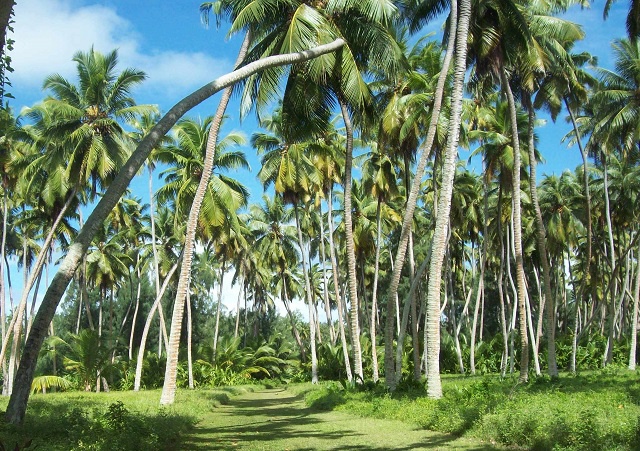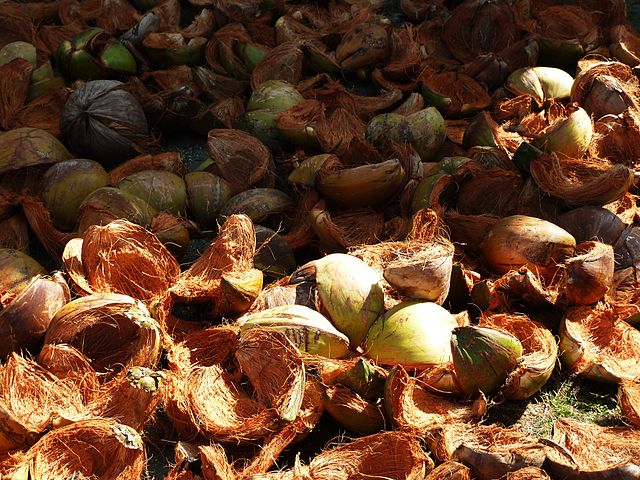9 parts of the coconut tree used in Seychelles
(Seychelles News Agency) - The coconut palm is known as the tree of life because it provides some of the basic necessities for humans and its endless uses. The palm not only provides a source of food and water but is also used for shelter, fuel and raw materials.
In Seychelles, this palm can be found all over the 115 islands and usually adorns the coast of most beaches. SNA looks at some of the ways Seychellois uses this palm.
1. The husk
This is the rough exterior of the coconut which is made up of the coir (tough fibres). Back in the days when there weren’t any scouring pad to wash the dishes, the locals used the coir – with sand -- to clean their pots. It gave quite a shine to the utensil.
For families who could not afford mattresses, the fibre was used as stuffing to make homemade mattresses. The whole husk is also great to plant with, fuel fires and make toys.
|
|
| (Wikimedia) Photo License: (CC BY-SA 3.0) |
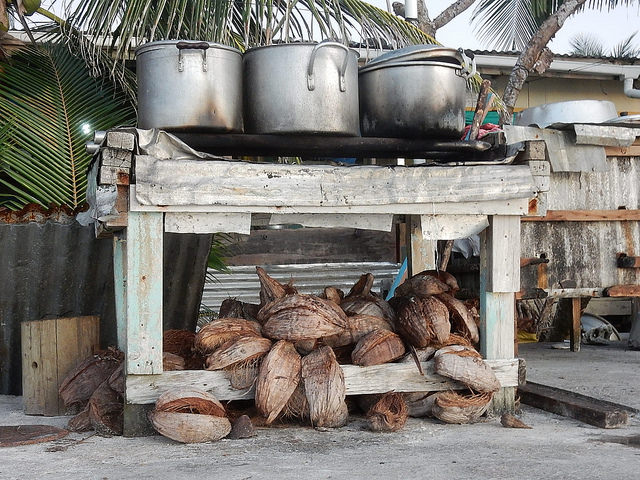 |
| (Michael Coghlan/Flickr) Photo License: (CC BY-SA 2.0) |
2. The shell
Before reaching the delicious flesh inside the coconut one has to get through the hard shell. Today this is mostly thrown away after extracting the flesh -- did you know that it makes a great charcoal replacement? The shell which is quite strong is also used by artisans to create long-lasting handicrafts.
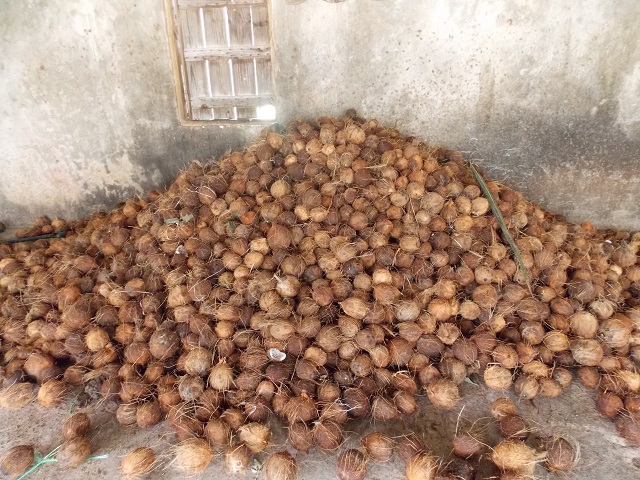 |
| (IDC) Photo License: CC-BY |
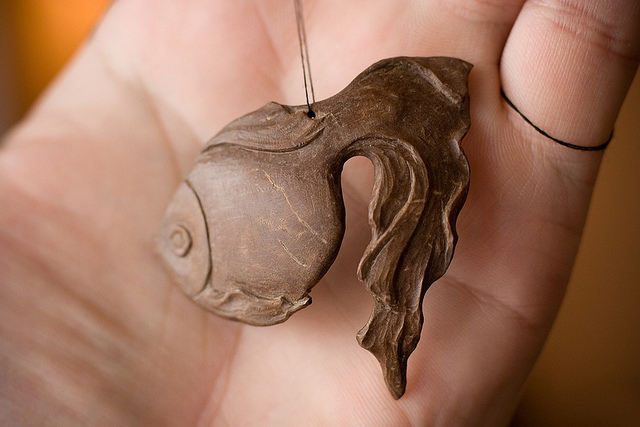 |
| (Serge Malevanny/Flickr) Photo License: (CC BY 2.0) |
3. The flesh
This is the edible part of the nut. The vitamin-rich coconut kernel (the flesh) can be eaten raw or cooked, or processed to manufacture other products. When grated -- placed in water and squeezed (or blended) it produces coconut milk used in many Creole meals and desserts. When matured, oil can be extracted from the kernel. The oil can be used for cooking, prevent hair damage and moisturize the skin. Psst, it’s a great sunscreen too.
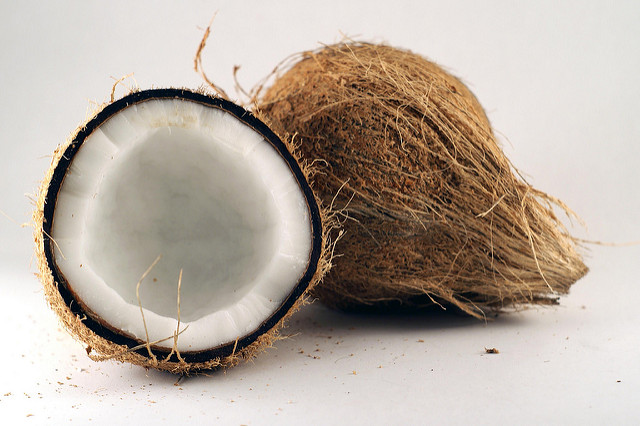 |
| (Hafiz Issadeen/Flickr) Photo License: (CC BY 2.0) |
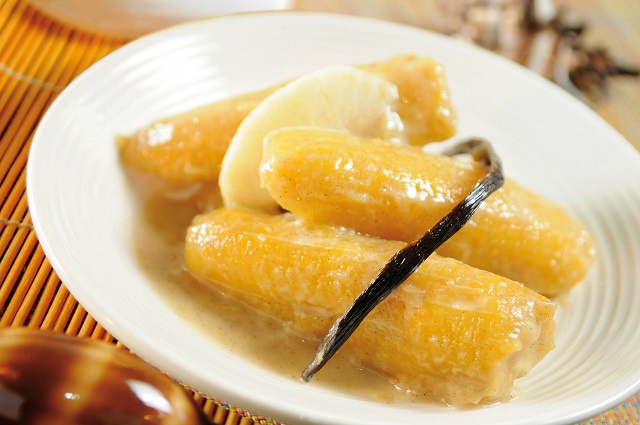 |
| (Preshella Fabre) Photo License: CC-BY |
4. The water
Fresh coconut water is high in B vitamins, proteins and ascorbic acid. A quick drink when feeling drained and depleted will help you get right back up on your feet. It’s also a great treatment for sunstroke, stomach ache and urinary problems.
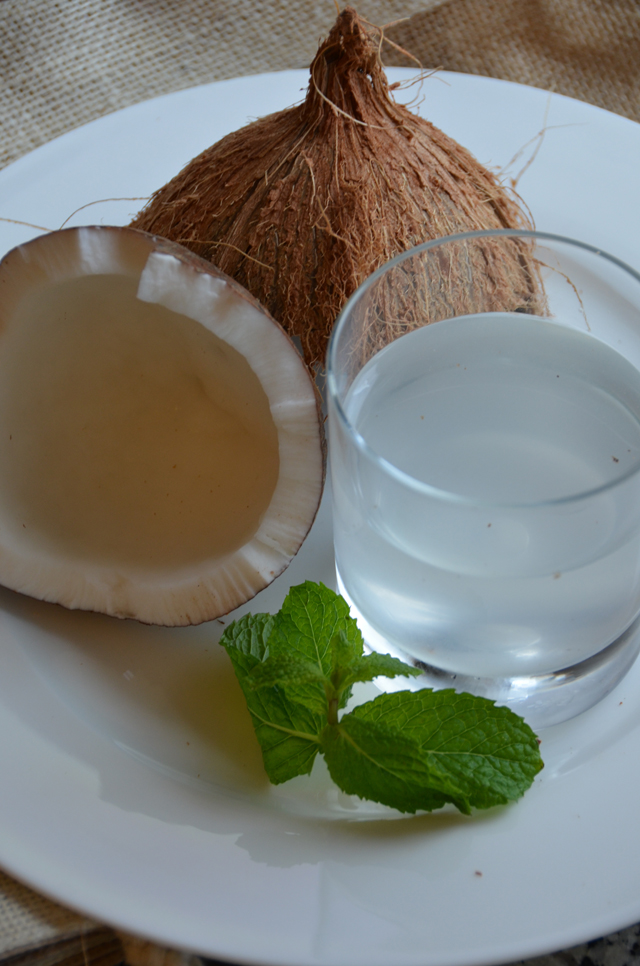 |
| (Rob Bertholf/Flickr) Photo License: (CC BY 2.0) |
5. The leaves
These are used to weave hats, baskets and mats. It’s a time-consuming practice which takes a bit of skill. Skilled craftsmen use the midribs -- the central veins that hold the leaves together -- to make brooms. These are also used to make barbecue skewer, decorations and traditional toys. In the past, the leaves were sometimes used for thatching traditional Creole houses.
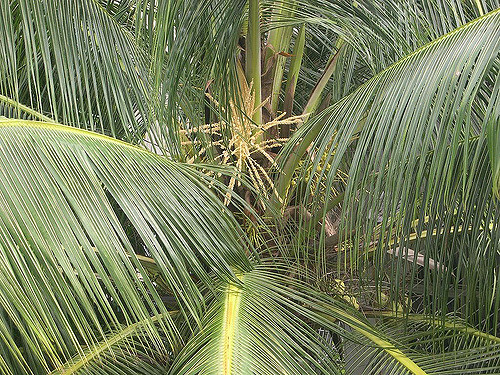 |
| (Joe Zachs/Flickr) Photo License: (CC BY 2.0) |
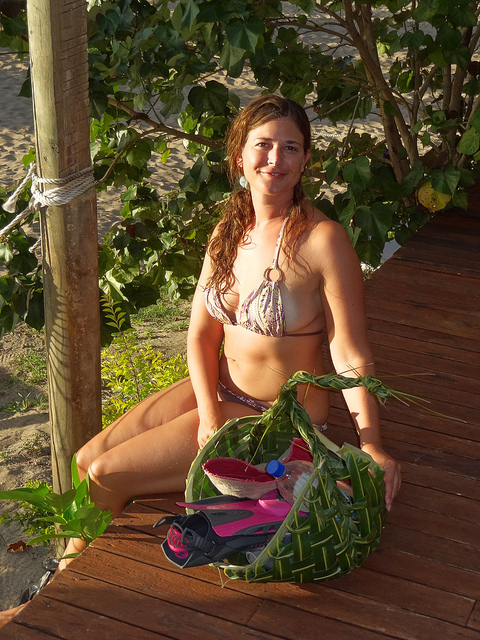 |
| (Dave Lonsdale/Flickr) Photo License: (CC BY 2.0) |
6. The heart
Known as ‘palmis’, it is found right underneath the leaves of the coconut tree. It is a delicacy that is on high demand by both locals and visitors.
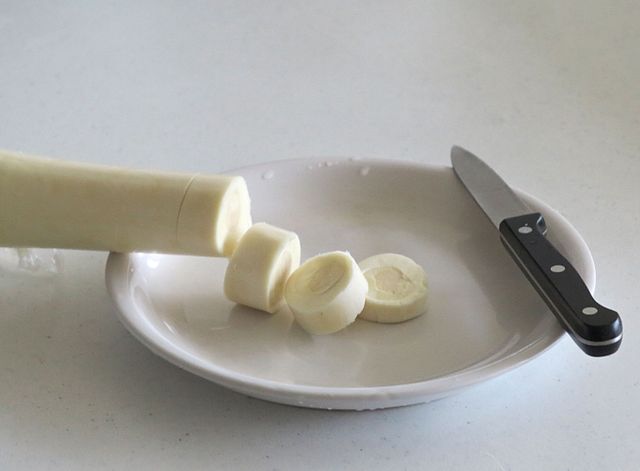 |
| (Wikimedia) Photo License: (CC BY-SA 3.0) |
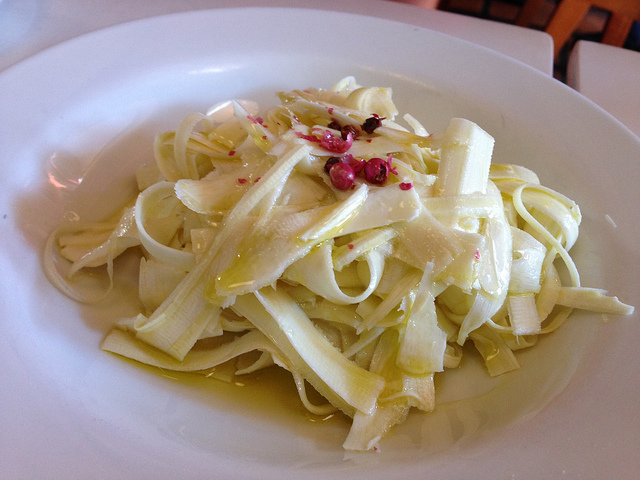 |
| (Nicholas Lundgaard/Flickr) Photo License: (CC BY-SA 2.0) |
7. Spathe and inflorescence
The coconut spathe is the scope-like structure that encloses the inflorescences (the flowers) of the tree. It can be polished and varnished to make containers. When dried the inflorescence are used as a broom, especially on the beach when making a space for a lovely picnic. When the spathe and inflorescences are still closed-- locals tap it to release a sap, which is collected and fermented to make ‘kalou’ (coconut tree toddy).
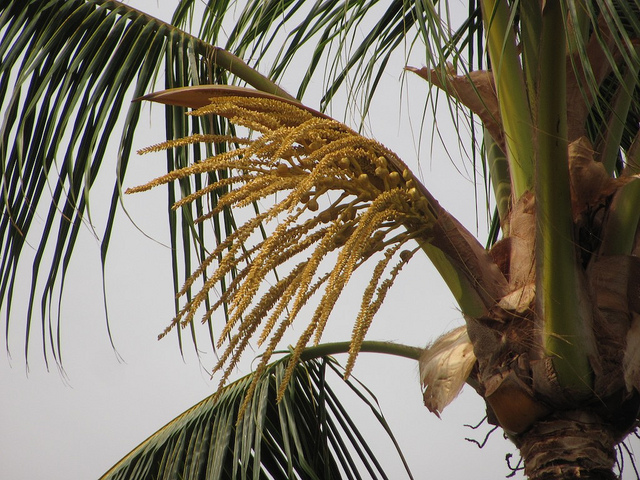 |
| (Malcolm Manners/Flickr) Photo License: (CC BY 2.0) |
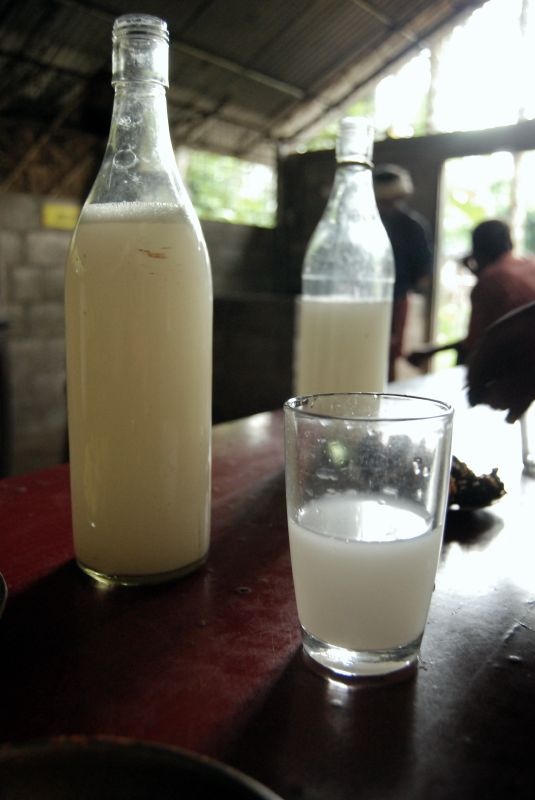 |
| (Wikipedia) Photo License: (CC BY 3.0) |
8. The trunk
In the past, the trunks were turned into planks, used to board and partition houses. They make great pillars as well.
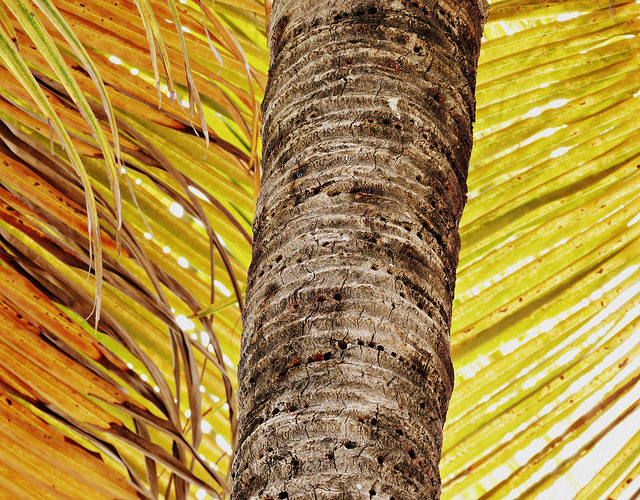 |
| (goatling/Flickr) Photo License: (CC BY-SA 2.0) |
9. Roots
This part of the tree holds medicinal properties. It can be used to treat gall bladder, urinary infections, kidney-related diseases, heartburn and eczema. ‘Kalou’ can also be made from the sap found in the root. It is said that this ‘kalou’ is stronger.
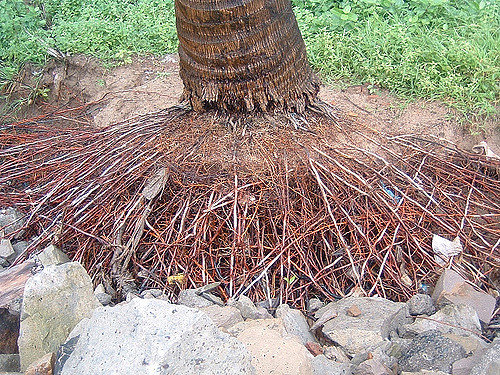 |
| (Saagar Yadav/Flickr) Photo License: (CC BY 2.0) |

